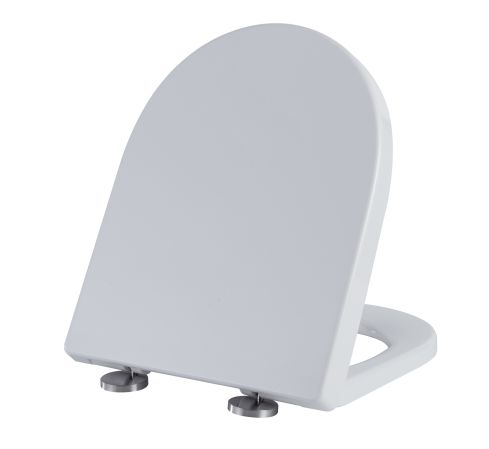Choosing the Right Toilet Seat
Bathroom
- Sep 6th, 2023
- By: nubathroom_admin

When it comes to selecting a toilet seat, many factors come into play, including durability, comfort, and aesthetic appeal. Two popular materials used in the manufacturing of toilet seats are urea-formaldehyde and polypropylene. In this blog, we will explore the key differences between these materials to help you make an informed decision when choosing the perfect toilet seat for your bathroom.
1. Composition and Manufacturing:
Urea-formaldehyde (UF): UF toilet seats are made from a mixture of urea-formaldehyde resin, which is a thermosetting plastic. This material is created by combining urea and formaldehyde under heat and pressure, resulting in a solid and durable product.
Polypropylene (PP): On the other hand, polypropylene toilet seats are made from a type of thermoplastic polymer. Polypropylene is derived from propylene gas and is widely used in various household products due to its versatility and cost-effectiveness.
2. Durability:
UF: Urea-formaldehyde toilet seats are known for their exceptional durability. They are resistant to chipping, cracking, and fading, making them a long-lasting option for your bathroom. However, they may be more prone to scratches compared to polypropylene seats.
PP: Polypropylene toilet seats are also durable and can withstand regular use. While they may not be as resistant to scratches as UF seats, they are still sturdy and capable of withstanding daily wear and tear.
3. Comfort:
UF: Urea-formaldehyde toilet seats generally offer a smooth and polished surface, providing a comfortable seating experience. They are less likely to feel cold to the touch, making them a popular choice in colder climates.
PP: Polypropylene seats, too, can offer a comfortable seating experience. However, they may feel slightly cooler to the touch, especially in colder environments. Some manufacturers add additional cushioning or contouring to enhance comfort.
4. Hygiene and Maintenance:
UF: Urea-formaldehyde toilet seats have a non-porous surface that resists the absorption of moisture, preventing the growth of bacteria and making them easy to clean. They are also less likely to stain and retain odors, ensuring a more hygienic bathroom environment.
PP: Polypropylene seats also have a non-porous surface, making them relatively easy to clean. However, due to potential surface texture variations, there is a possibility for bacteria and stains to accumulate in crevices, requiring more thorough cleaning.
5. Aesthetics:
UF: Urea-formaldehyde toilet seats are available in a wide range of colors, patterns, and finishes, allowing you to choose a seat that matches your bathroom decor. The smooth surface of UF seats also contributes to their sleek and polished appearance.
PP: Polypropylene seats are available in various colors and finishes as well, but they may have a slightly less polished appearance due to the nature of the material. However, they still offer ample options to suit different bathroom styles.
When choosing between urea-formaldehyde and polypropylene toilet seats, consider factors such as durability, comfort, hygiene, and aesthetics. Urea-formaldehyde seats are known for their exceptional durability and resistance to chipping, cracking, and fading. Polypropylene seats offer similar durability and are often more cost-effective. Ultimately, the decision depends on your personal preferences and the specific requirements of your bathroom.

